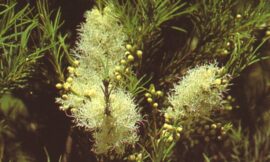The World of Tea Leaves: Types, Cultivation, Processing, and Beyond
Introduction to Tea Leaves
Tea leaves have been an essential part of human culture for of years. The humble tea leaf has given rise to a diverse array of tea types, cultivation practices, and processing methods, as well as uses beyond tea-making. This post delves into the world of tea leaves, exploring their types, where they are grown, how they are processed, and their alternative uses.
Types of Tea Leaves
All true tea comes from the Camellia Sinensis plant, but variations in processing and cultivation result in different types of tea. The primary categories include green, black, white, oolong, and pu-erh tea.
Green tea is the least oxidised, while black tea undergoes full oxidation. White tea is made from young leaves and buds, oolong tea is partially oxidised, and pu-erh tea undergoes a unique fermentation process.
Cultivation of Tea Leaves
Tea leaves are grown in various countries, with China, India, Kenya, Sri Lanka, and Vietnam being the top producers. The climate, soil, and altitude of a region significantly impact the flavour and quality of the tea leaves. Tea plants thrive in tropical and subtropical climates with well-drained, acidic soil. High-altitude tea gardens often produce more delicate and aromatic teas.
Several teas qualities have gotten their name from the place they are grown like, Darjeeling Tea, Assam Tea and Ceylon Tea.
Processing Methods
The processing of tea leaves plays a crucial role in determining the final tea type. The general steps include plucking, withering, rolling, oxidation, and drying.
Green tea leaves are quickly steamed or pan-fired to prevent oxidation, while black tea leaves are fully oxidised to develop their robust flavour. White tea undergoes minimal processing, and oolong tea is partially oxidised. Pu-erh tea is fermented and aged, resulting in a unique, earthy flavour profile.
Uses of Tea Leaves Beyond Tea-Making
Tea leaves have applications beyond traditional tea-making. They can be used as a natural dye, producing colors ranging from pale yellow to deep brown, depending on the tea type and concentration.
Tea leaves are also used in cooking, with matcha (a powdered green tea) being a popular ingredient in both sweet and savoury dishes. Additionally, tea leaves have been used in traditional medicine for their potential health benefits, such as antioxidant properties and digestive support.
Another use of tea leaves is telling fortunes.
Does Tea Tree Oil and Tea Leaves come from the same plant?
No. The Tea Tree Oil is extracted from the leaves of the Melaleuca Alternifolia tree, which is native to Australia and is not even closely related to the tea plant, Camellia Sinensis.
Summary
The world of tea leaves is vast and diverse, encompassing a range of types, cultivation practices, and processing methods. From the verdant tea gardens of China and India to the unique flavours of green, black, white, oolong, and pu-erh teas, tea leaves have captured the hearts and palates of people worldwide. Beyond tea-making, tea leaves find their way into cooking, natural dyeing, and traditional medicine, showcasing their versatility and enduring cultural significance.
Tea has an interesting story of Discovery and Journey through the world.




